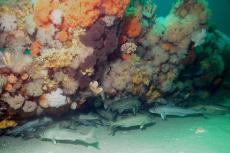Resurgence of North Sea fish stocks
Thanks to management measures, key fish stocks in the North Sea like cod, haddock and plaice, are rising and could result in significantly higher quotas next year, according to new scientific assessments.
Many years of restraint and restrictive fishing quotas seem to finally have paid off. Within a decade the stocks of spawning cod has almost doubled
Though levels of cod in the North Sea are not yet what they were pre-crisis, a remarkable recovery is well under way and advancing. Along with cod and plaice stocks of herring, haddock, hake, Norway lobster, common dab and witch (Torbay sole) are also improving .
Pulling back from the brink
After the Second World War there were four million tons of cod in the seas closest to British shores. In the 1970s the annual catch was between 200,000 and 300,000 tons and by 1983 the cod population sank to its lowest ever level: an estimated 740,000 tons.
Quotas on catches were introduced in the 1980s and in 2004, with concerns about stock depletion still high, the permitted catch was set at 27,300 tons. In 2006 the stock of spawning cod stood at 44,000 tons. Today it is 149,000 tons.
The overall picture is now sufficiently encouraging for the Marine Conservation Society to review North Sea cod's "fish to avoid" status and it could be officially certified as "sustainable" by the Marine Stewardship Council within five years. Stock recovery is also being held back by the effects of climate change. The North Sea has been warming up – the temperature has risen by 1-2 deg C during the past 100 years – so cod and other similar whitefish species are moving north to colder waters.
It is certainly encouraging that increases have been advised for some of our most valuable stocks particularly haddock which is up by at least 30%, North Sea cod which is increased by up to 15% and plaice which is up by at least 15% compared to last year
Richard Lochhead, Cabinet Secretary for Rural Affairs, Food and the Environment



